Chameleon People - [11]
‘You are absolutely right. But there is still a considerable difference between being strange and being guilty, even though they are often confused. So no one actually saw him killing Per Johan. I don’t think he did it. And I would be grateful if you could tell me who did, if you manage to find out one day.’
I had a growing appreciation of why Per Johan Fredriksen had been fascinated by this remarkable woman. But I also realized that, for the moment, she was not able to help me any further with the mysterious circumstances surrounding her lover’s death.
So I offered my condolences once again, assured her that the investigation would keep all possibilities open, promised to contact her as soon as there was any news, and asked her to stay in town for the next few days in case we needed to question her further.
Harriet Henriksen’s reply was short: that until her beloved had been buried, she had nowhere to go, nor any reason to do so. And as if to illustrate this, she remained seated by the coffee table and the burnt-out candle as I got up and left.
VI
I was back at the main police station by half past twelve. Danielsen was nowhere to be seen, but my boss was sitting in his office with the door open. He waved me in as soon as he saw me.
‘Danielsen has questioned the suspect again. And despite applying considerable pressure, he got nowhere. The boy adamantly refused to answer any questions. Danielsen found this extremely provoking and is even more convinced of his guilt. He believes that the only question of any real interest is whether the murderer should be sent to prison or a mental hospital. And I am inclined to agree. So we decided that Danielsen could go home at the end of his shift. The lack of identity and motive remains a problem and I would like you to focus on that for the rest of the day.’
I immediately agreed to this. My impressions from the meeting with Harriet Henriksen were being diluted by the light of day and her conclusion now felt like no more than unqualified speculation, so I did not bother to mention it to my boss. However, I was less convinced than Danielsen about the boy’s guilt. But I was quite happy to be allowed to carry on working on the case without Danielsen interfering – and without being asked to divulge my thoughts on the case.
The switchboard was remarkably still, but there was a growing number of journalists calling in from different papers. No one had as yet called to report anyone missing or to leave any other message that might help to identify the boy on the red bicycle. It was more and more mysterious. The boy was, as far as anyone could tell, Norwegian and he was a minor. Despite a speech impediment, it was clear that he spoke with an Oslo accent. If he had parents, it seemed very odd indeed that they had not reported him missing. If he lived with other relatives or in a children’s home of some sort, it was equally odd that no one had contacted the police.
I guessed it was only a matter of time before someone would enquire about him. If nothing else, someone might recognize him if we published the photographs in the papers. But like the boss, I wanted the question of his identity to be solved before they went to print. I was finding it increasingly difficult to believe that the young man did not have some kind of connection with Per Johan Fredriksen. It seemed too incredible to be true that such a well-known politician should be randomly stabbed on the street.
I was sitting in my office pondering on the identity and motive of the killer when my phone rang. I heard the familiar and annoyingly slow voice of one of the switchboard operators. She said that I was about to be transferred to a lady who had asked to speak to the person in charge of the Per Johan Fredriksen investigation immediately. I was, of course, curious as to who it might be and why she had called. It was not long before I knew.
‘Good afternoon. My name is Ane Line Fredriksen and I am the eldest daughter of the late Per Johan Fredriksen. My mother has only now been able to tell me that you wanted to talk to me as soon as possible. So, here I am,’ she said.
I was slightly taken aback by her briskness. I expressed my condolences and said that it would certainly be good to talk, if it was not too much of an inconvenience for her.
‘Not at all. My daughter is with my ex-husband in Hamar and I have to pick her up around seven o’clock this evening. So it would be best if we could meet as soon as possible. Would you like to come here or should I come there?’
Her tempo left me breathless, but it was also refreshing to meet such a dynamic and outspoken member of the family. So I said that I was currently in my office at the main police station and perhaps it would be most practical if we could meet here.
‘Of course. I’ll be there in a quarter of an hour,’ Ane Line Fredriksen said, and put down the phone.
I sat with the receiver in my hand, wondering what she looked like. And how many more people this investigation would involve.
VII
Exactly sixteen minutes later, Ane Line Fredriksen was shown into my office, as she looked around with obvious curiosity. I could not see much resemblance to her mother or siblings, but I knew it was the woman from the telephone call even before I heard her voice.
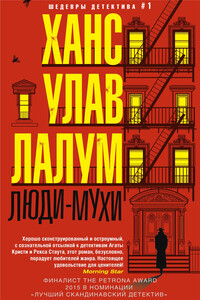
Убит бывший лидер норвежского Сопротивления и бывший член кабинета министров Харальд Олесен. Его тело обнаружено в запертой квартире, следов взлома нет, орудие убийства отсутствует. На звук выстрела к двери Олесена сбежались все соседи, но никого не увидели. Инспектор уголовного розыска Колбьёрн Кристиансен считает, что убийство, скорее всего, совершил кто-то из них. Более того, он полагает, что их показания лживы.
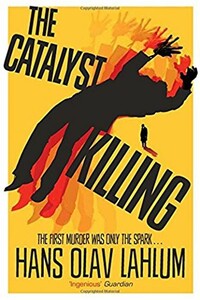
The third mystery in the hugely compelling, bestselling international crime series from Norway's answer to Agatha Christie, Hans Olav Lahlum, The Catalyst Killing will have you guessing to the final clue. The first murder was only the spark… 1970: Inspector Kolbjorn Kristiansen, known as K2, witnesses a young woman desperately trying to board a train only to have the doors close before her face. The next time he sees her, she is dead… As K2 investigates, with the help of his precocious young assistant Patricia, he discovers that the story behind Marie Morgenstierne's murder really began two years ago, when a group of politically active young people set out on a walking tour in the mountains.
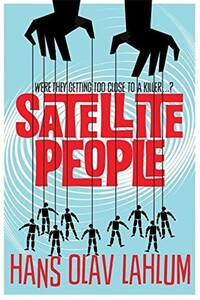
A gripping, evocative, and ingenious mystery which pays homage to Agatha Christie, Satellite People is the second Norwegian mystery in Hans Olav Lahlum's series. Oslo, 1969: When a wealthy man collapses and dies during a dinner party, Norwegian Police Inspector Kolbjorn Kristiansen, known as K2, is left shaken. For the victim, Magdalon Schelderup, a multimillionaire businessman and former resistance fighter, had contacted him only the day before, fearing for his life. It soon becomes clear that every one of Schelderup's 10 dinner guests is a suspect in the case.
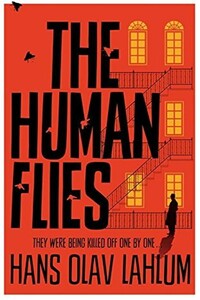
Oslo, 1968: ambitious young detective Inspector Kolbjorn Kristiansen is called to an apartment block, where a man has been found murdered. The victim, Harald Olesen, was a legendary hero of the Resistance during the Nazi occupation, and at first it is difficult to imagine who could have wanted him dead. But as Detective Inspector Kolbjorn Kristiansen (known as K2) begins to investigate, it seems clear that the murderer could only be one of Olesen's fellow tenants in the building. Soon, with the help of Patricia – a brilliant young woman confined to a wheelchair following a terrible accident – K2 will begin to untangle the web of lies surrounding Olesen's neighbors; each of whom, it seems, had their own reasons for wanting Olesen dead.
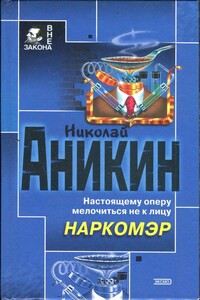
Тупик. Стена. Старый кирпич, обрывки паутины. А присмотреться — вроде следы вокруг. Может, отхожее место здесь, в глухом углу? Так нет, все чисто. Кто же сюда наведывается и зачем? И что охраняет тут охрана? Да вот эту стену и охраняет. Она, как выяснилось, с секретом: время от времени отъезжает в сторону. За ней цех. А в цеху производят под видом лекарства дурь. Полковник Кожемякин все это выведал. Но надо проникнуть внутрь и схватить за руку отравителей, наживающихся на здоровье собственного народа. А это будет потруднее…

«Посмотреть в послезавтра» – остросюжетный роман-триллер Надежды Молчадской, главная изюминка которого – атмосфера таинственности и нарастающая интрига.Девушка по имени Венера впадает в кому при загадочных обстоятельствах. Спецслужбы переправляют ее из закрытого городка Нигдельск в Москву в спецклинику, где известный ученый пытается понять, что явилось причиной ее состояния. Его исследования приводят к неожиданным результатам: он обнаруживает, что их связывает тайна из его прошлого.
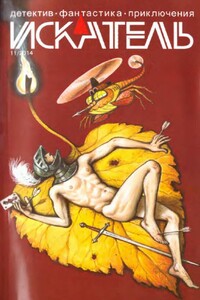
«ИСКАТЕЛЬ» — советский и российский литературный альманах. Издаётся с 1961 года. Публикует фантастические, приключенческие, детективные, военно-патриотические произведения, научно-популярные очерки и статьи. В 1961–1996 годах — литературное приложение к журналу «Вокруг света», с 1996 года — независимое издание.В 1961–1996 годах выходил шесть раз в год, в 1997–2002 годах — ежемесячно; с 2003 года выходит непериодически.Содержание:Анатолий Королев ПОЛИЦЕЙСКИЙ (повесть)Олег Быстров УКРАДИ МОЮ ЖИЗНЬ (окончание) (повесть)Владимир Лебедев ГОСТИ ИЗ НИОТКУДА.
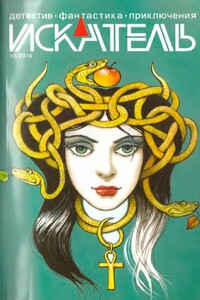
«ИСКАТЕЛЬ» — советский и российский литературный альманах. Издается с 1961 года. Публикует фантастические, приключенческие, детективные, военно-патриотические произведения, научно-популярные очерки и статьи. В 1961–1996 годах — литературное приложение к журналу «Вокруг света», с 1996 года — независимое издание.В 1961–1996 годах выходил шесть раз в год, в 1997–2002 годах — ежемесячно; с 2003 года выходит непериодически.Содержание:Олег Быстров УКРАДИ МОЮ ЖИЗНЬ (повесть);Петр Любестовский КЛЕТКА ДЛЯ НУТРИИ (повесть)
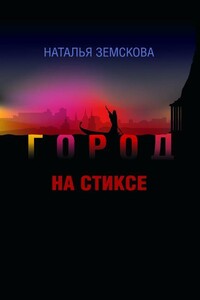
Наталья Земскова — журналист, театральный критик. В 2010 г. в издательстве «Астрель» (Санкт-Петербург) вышел её роман «Детородный возраст», который выдержал несколько переизданий. Остросюжетный роман «Город на Стиксе» — вторая книга писательницы. Молодая героиня, мечтает выйти замуж и уехать из забитого новостройками областного центра. Но вот у неё на глазах оживают тайны и легенды большого губернского города в центре России, судьбы талантливых людей, живущих рядом с нею. Роман «Город на Стиксе» — о выборе художника — провинция или столица? О том, чем рано или поздно приходится расплачиваться современному человеку, не верящему ни в Бога, ни в черта, а только в свой дар — за каждый неверный шаг.
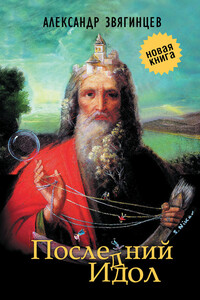
В сборник «Последний идол» вошли произведения Александра Звягинцева разных лет и разных жанров. Они объединены общей темой исторической памяти и личной ответственности человека в схватке со злом, которое порой предстает в самых неожиданных обличиях. Публикуются рассказы из циклов о делах следователей Багринцева и Северина, прокуроров Ольгина и Шип — уже известных читателям по сборнику Звягинцева «Кто-то из вас должен умереть!» (2012). Впервые увидит свет пьеса «Последний идол», а также цикл очерков писателя о событиях вокруг значительных фигур общественной и политической жизни России XIX–XX веков — от Петра Столыпина до Солженицына, от Александра Керенского до Льва Шейнина.